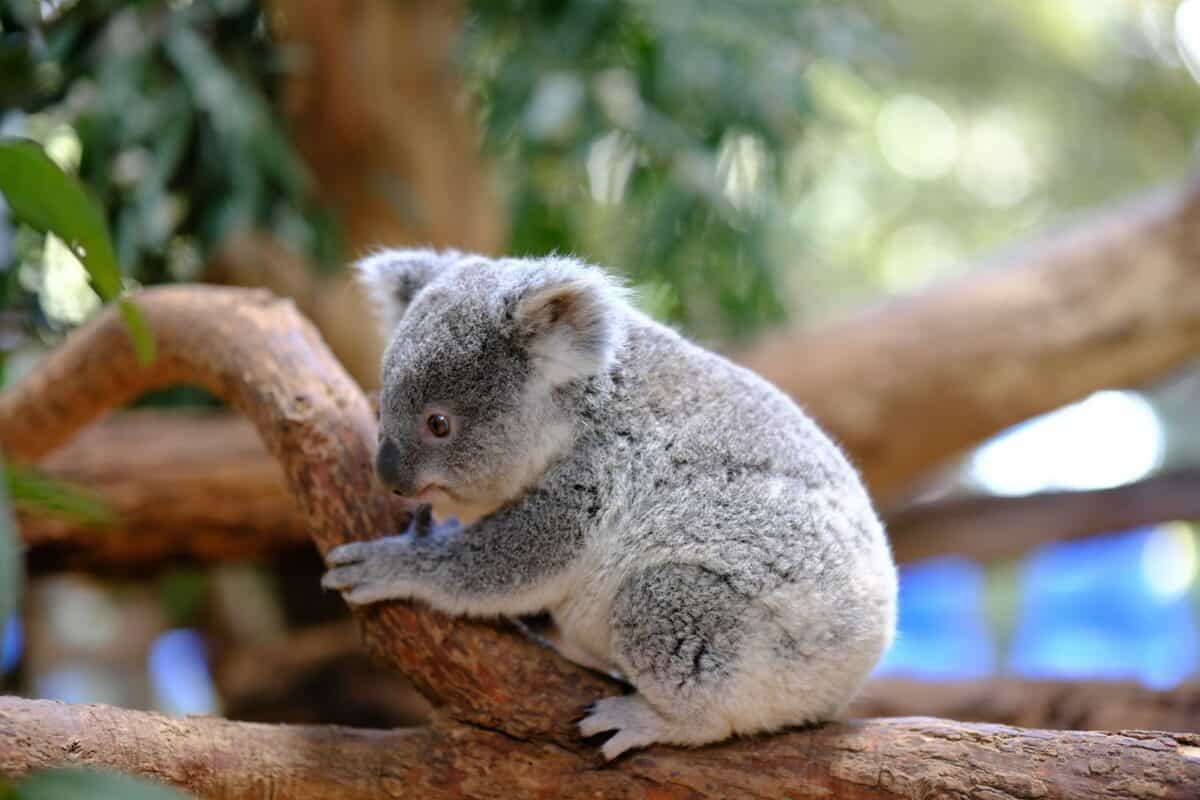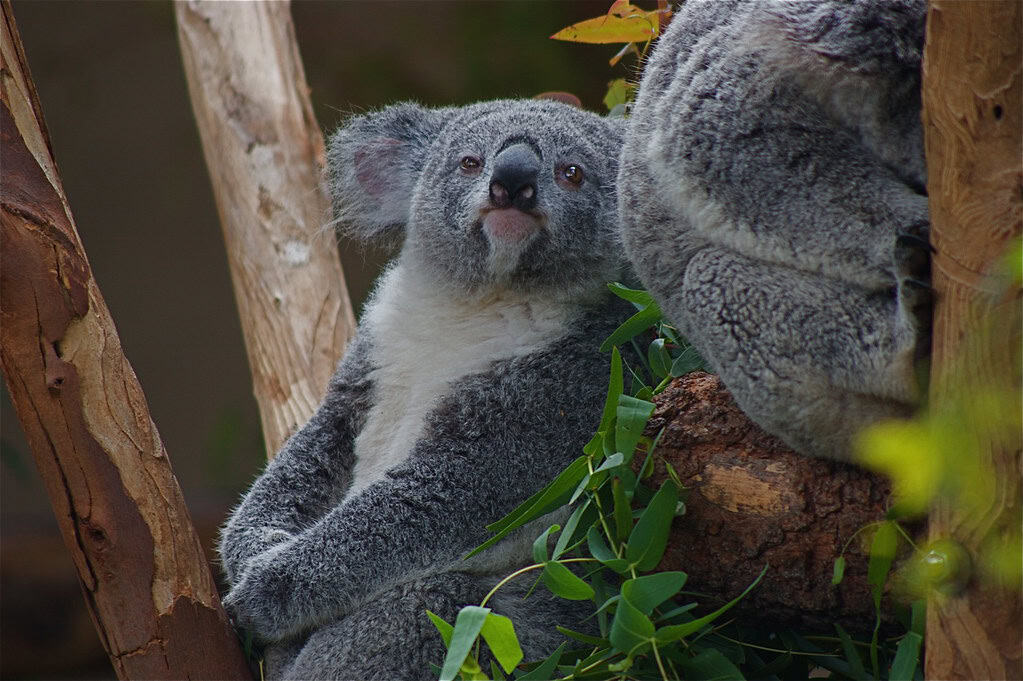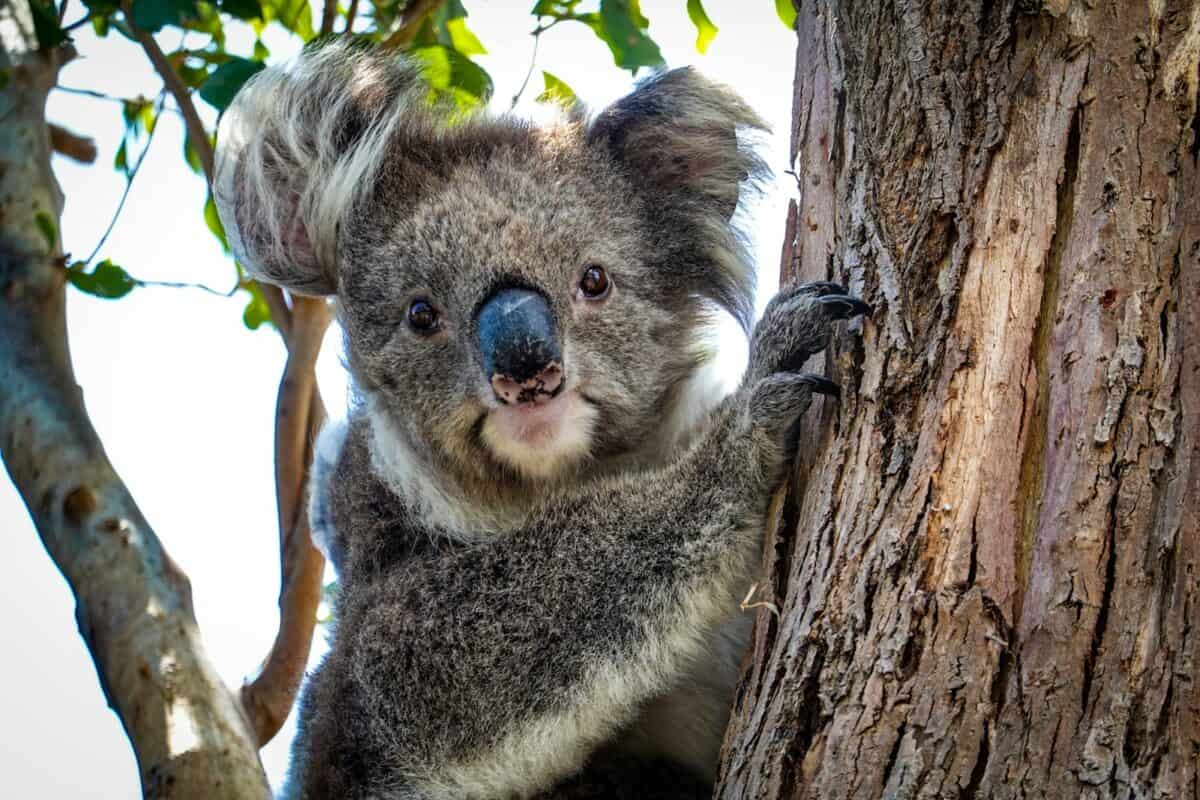With their teddy bear-like appearance, sleepy demeanor, and distinctively round, fuzzy ears, koalas have captured hearts worldwide, becoming one of Australia’s most recognizable symbols. These endearing marsupials regularly appear in children’s books, tourism campaigns, and conservation efforts. Yet despite their global popularity, koalas remain profoundly misunderstood creatures. From being incorrectly labeled as “koala bears” to widespread misconceptions about their diet, behavior, and biology, the gap between public perception and scientific reality is surprisingly wide. This fascinating disconnect makes koalas a perfect example of how a species can be simultaneously adored and misrepresented in popular culture.
The Bear That Isn’t a Bear: Taxonomy and Evolution

Perhaps the most persistent misconception about koalas is that they’re bears. The term “koala bear,” though commonly used, is entirely incorrect. Koalas (Phascolarctos cinereus) are marsupials, not members of the Ursidae family. They belong to the same broad group as kangaroos, wombats, and possums, characterized by their pouches for carrying young. The koala is so distinctive that it’s the only living member of the family Phascolarctidae.
Evolutionarily speaking, koalas diverged from other marsupials approximately 40 million years ago, developing specialized adaptations for their unique ecological niche. Fossil records show that ancient koalas were more diverse and some were considerably larger than today’s species. While bears evolved on the Northern Hemisphere continents, koalas developed in isolation on the Australian continent, representing a perfect example of convergent evolution – where unrelated species develop similar traits due to similar environmental pressures rather than shared ancestry.
Eucalyptus Specialists: A Toxic Diet Few Can Manage

Koalas are renowned for their eucalyptus diet, but few understand just how remarkable this dietary specialization truly is. Eucalyptus leaves are toxic to most animals, containing compounds like tannins, phenols, and cyanide-producing glycosides. Koalas have evolved specialized digestive systems with unique detoxifying enzymes in their liver to break down these toxins. Their cecum (a pouch connected to the intestine) is extraordinarily long – proportionally larger than any other mammal’s – allowing for extended fermentation to extract nutrients from this low-calorie food.
Even more fascinating is how selective koalas are about their meals. Although Australia has over 600 eucalyptus species, koalas only eat about 30 varieties, and individual koalas often have strong preferences for specific trees. This selectivity isn’t arbitrary – they’re choosing leaves based on water content, nutritional value, and toxin levels. This specialized diet comes at a cost: koalas must sleep up to 22 hours daily to conserve the limited energy they extract from their food, and they typically consume about 500 grams (over a pound) of leaves daily to meet their nutritional needs.
Sleepy But Not Lazy: The Koala’s Energy-Conserving Lifestyle

The image of koalas as perpetually sleepy creatures isn’t wrong, but the reason behind their extensive rest periods is widely misunderstood. Koalas sleep for 18-22 hours daily not due to laziness or drug-like effects from eucalyptus (a common myth), but because of their extraordinarily low-energy diet. Eucalyptus leaves provide very few calories while requiring significant energy to detoxify. The koala’s slow metabolism and extensive rest periods represent an evolutionary solution to this dietary challenge.
When they are awake, koalas are actually quite capable and active climbers. They possess sharp claws and specialized paw structures that allow them to navigate tree branches efficiently. Their movement pattern typically involves short bursts of activity followed by extended rest periods. Even their brain has adapted to this low-energy lifestyle – koalas have one of the smallest brain-to-body mass ratios of any mammal, reducing energy consumption while maintaining the neural functions necessary for their specialized ecological niche. Far from being simple or unintelligent, koalas represent a marvel of evolutionary specialization.
Complex Social Structure: Beyond the Solitary Stereotype

Contrary to popular belief, koalas aren’t completely solitary animals. While they don’t live in groups like many social mammals, they maintain a complex social structure through a system of overlapping home ranges. Males establish territories they mark with scent glands on their chest, producing a strong musky odor that human noses can easily detect. These territories typically overlap with several females’ home ranges, creating a breeding-focused social network rather than a permanent group structure.
Communication between koalas is far more sophisticated than most people realize. Males produce a distinctive bellowing call that can travel up to one kilometer through forest environments. These calls serve multiple purposes: advertising territory ownership, attracting females, and intimidating rival males. Females communicate with their young through soft clucking sounds, and joeys (baby koalas) make distinct distress calls when separated from their mothers. This nuanced communication system allows koalas to maintain social connections despite their physically distanced lifestyle, demonstrating that “solitary” doesn’t mean “unsocial” in the koala world.
The Surprising Reproductive Biology of Koalas

Koala reproduction contains several fascinating elements that often surprise people learning about these marsupials for the first time. Female koalas typically give birth to a single joey after a short 35-day gestation period. The newborn is extraordinarily underdeveloped – about the size of a jelly bean, weighing less than one gram, hairless, and with undeveloped limbs. This tiny joey must make an incredible journey from the birth canal to the pouch using only its well-developed front limbs and sense of smell, all without maternal assistance.
Once safely in the pouch, the joey attaches to one of two teats and remains there continuously for about six months, gradually developing into a recognizable koala. After emerging from the pouch, joeys ride on their mother’s back or belly for another six months while learning to process eucalyptus leaves. Unlike most mammals, koala mothers produce two types of milk simultaneously – one formula for the developing joey in the pouch and a different composition for the older joey that has emerged but still nurses occasionally. This reproductive strategy, while common among marsupials, represents one of the most misunderstood aspects of koala biology.
Koala Fingerprints: A Remarkable Convergent Evolution

One of the most surprising and least known facts about koalas is that they possess fingerprints remarkably similar to human ones. These prints are so similar that forensic scientists have reported that even under an electron microscope, koala fingerprints can be difficult to distinguish from human prints. This represents an extraordinary case of convergent evolution, where unrelated species independently evolve similar traits. Humans and koalas last shared a common ancestor around 70 million years ago, yet both developed almost identical fingerprint patterns.
The reason for this convergence likely relates to the specialized gripping function needed by both species. For koalas, the ridged fingerprints improve their ability to grasp smooth eucalyptus branches and select individual leaves. Unlike other animals with similar tree-dwelling lifestyles, koalas need exceptional grip precision due to their large body size relative to the branches they navigate and their need to manipulate individual leaves for careful inspection before eating. This remarkable adaptation highlights how evolutionary pressures can produce strikingly similar solutions in distantly related species – a fascinating aspect of koala biology rarely covered in popular media.
The Koala’s Unique Water Relationship

Another widely misunderstood aspect of koala biology is their relationship with water. The name “koala” is often said to mean “doesn’t drink water” in Aboriginal languages, reinforcing the common belief that koalas never drink water and get all their hydration from eucalyptus leaves. While koalas do obtain most of their moisture needs from their leafy diet (eucalyptus leaves are approximately 50-60% water), the reality is more nuanced. During periods of extreme heat, drought, or disease, koalas will actively seek out water sources.
Researchers have documented koalas drinking from streams, water holes, and even artificial water stations during drought conditions. They’ve also been observed licking rainwater from tree trunks after storms. This behavior has become increasingly common as climate change intensifies heat waves and drought conditions across Australia. The misconception that koalas “never” drink water has occasionally led to well-meaning but misguided rescue attempts when people spot koalas drinking naturally during hot weather. Understanding this aspect of koala biology is crucial for both conservation efforts and public education about these adaptive marsupials.
Conservation Status: More Complex Than Most Realize

The conservation status of koalas is frequently misrepresented in both directions – either portrayed as being on the immediate brink of extinction or presented as completely secure. The reality is more nuanced and regionally variable. In 2022, koalas were officially listed as endangered in Queensland, New South Wales, and the Australian Capital Territory, while populations in Victoria and South Australia are more stable and even overabundant in some isolated areas. This regional variation makes overall population assessments challenging.
The threats facing koalas are multifaceted and interconnected. Habitat loss from urban development, agriculture, and logging remains the primary concern, with an estimated 80% of koala habitat destroyed since European colonization. Disease, particularly chlamydia, affects up to 100% of some populations, causing blindness, infertility, and death. Climate change intensifies both drought and bushfires, with the 2019-2020 bushfire season alone estimated to have killed over 60,000 koalas. Vehicle strikes and dog attacks add further pressure in developed areas. Conservation efforts must address this complex combination of threats rather than focusing on single issues, making koala protection a more complicated endeavor than many popular narratives suggest.
The Chlamydia Crisis: A Misunderstood Epidemic

Koalas face a devastating epidemic of chlamydia that threatens population viability across much of their range, yet public understanding of this issue is often limited to simplistic or comedic references. The disease, while related to the sexually transmitted infection in humans, has significant differences in koalas. It manifests more severely, causing blindness, reproductive tract damage, infertility, and often death. Some populations show infection rates approaching 100%, with the disease transmitted both sexually and from mother to joey.
The origin and severity of this epidemic remain subjects of scientific debate. Evidence suggests that the disease may have been introduced through contact with infected livestock brought by European settlers, although native strains may have existed previously. What’s clear is that the epidemic has intensified due to stress factors like habitat fragmentation, which compromises koalas’ immune systems. Treatment options exist, including antibiotics and vaccines in development, but these interventions face logistical challenges in wild populations. The disease represents one of the most significant but least understood threats to koala survival, combining biological, historical, and conservation dimensions that rarely receive comprehensive public attention.
Cultural Significance: Beyond the Cuddly Icon

The cultural significance of koalas extends far beyond their popular image as cuddly tourism ambassadors. For many Aboriginal peoples, koalas hold deep spiritual importance in Dreamtime stories and traditional knowledge systems. Different Aboriginal nations have varied names for koalas, including “kaola,” “koolah,” and “colah,” reflecting their long-standing relationship with these animals. Some traditional stories describe koalas as creatures who helped bring water to the land during droughts or explain how they came to live in trees.
In contemporary Australian culture, koalas occupy a complex position. They serve as powerful economic assets through tourism, with international visitors contributing billions to the Australian economy through koala-related experiences. They also function as umbrella species for conservation, where protecting koala habitat simultaneously protects numerous other plant and animal species that share their ecosystem. This multilayered cultural significance – spanning Indigenous spiritual values, economic importance, conservation symbolism, and national identity – makes koalas far more than just cute animals. Understanding this deeper cultural context helps explain why koala conservation generates such emotional responses both within Australia and internationally.
The Great Koala Count: Why We Don’t Know How Many Remain

One of the most surprising aspects of koala conservation is the substantial uncertainty about how many koalas actually exist in the wild. Estimates range dramatically from 120,000 to less than 58,000 individuals, reflecting the extraordinary difficulty of accurately counting these cryptic canopy-dwellers. Traditional wildlife survey methods often fall short with koalas – they’re camouflaged, primarily nocturnal, and distributed across vast areas of forest with variable densities. Even experienced spotters can miss koalas sitting directly above them in dense foliage.
Researchers have developed innovative approaches to address this challenge, including trained detection dogs that can smell koala scat, drone-based thermal imaging to detect koalas in tree canopies, and acoustic monitoring to record male bellowing calls. Citizen science initiatives like the Great Koala Count enlist thousands of volunteers to report sightings through smartphone apps. DNA analysis of droppings provides information about population health and genetic diversity without requiring direct observation. These sophisticated monitoring approaches reflect the scientific complexity behind koala conservation – a stark contrast to the simplified narratives often presented in popular media. The knowledge gap about basic population numbers illustrates how much remains to be learned about one of the world’s most recognized species.
Conclusion: Bridging the Gap Between Adoration and Understanding

The paradox of koalas being simultaneously beloved worldwide yet profoundly misunderstood represents a larger challenge in wildlife conservation and public education. Their teddy bear appearance and seemingly docile nature have made them global ambassadors for Australia and marsupials generally, yet this popularity hasn’t translated into comprehensive understanding of their complex biology, behavior, and conservation needs. By recognizing and addressing these misconceptions, we can develop more effective conservation strategies and deeper appreciation for these remarkable marsupials.
The koala’s story reminds us that genuine conservation requires moving beyond superficial affection to evidence-based understanding. Their specialized adaptations – from detoxifying eucalyptus to their unique reproductive strategies – represent evolutionary marvels worthy of scientific appreciation. The regional variation in their conservation status demands nuanced, locally-tailored protection approaches rather than one-size-fits-all solutions. As climate change intensifies threats to koala populations, bridging the gap between public adoration and scientific understanding becomes increasingly urgent.
Perhaps most importantly, koalas demonstrate how charismatic species can serve as gateways to broader ecological literacy. By moving beyond the “cute and cuddly” narrative to explore the fascinating complexities of koala biology and behavior, we can inspire deeper appreciation for biodiversity as a whole. In this way, the journey from loving koalas to truly understanding them reflects the broader path from environmental sentiment to substantive conservation action – a transformation essential for protecting not just koalas, but the countless other species that share their habitats and our planet.
- The Intelligence of Rhesus Macaques in Lab Research and Nature - August 10, 2025
- How Baby Dolphins Learn Through Play and Mimicry - August 10, 2025
- The Blue Whale: The Largest Animal Ever Known to Have Lived - August 10, 2025

